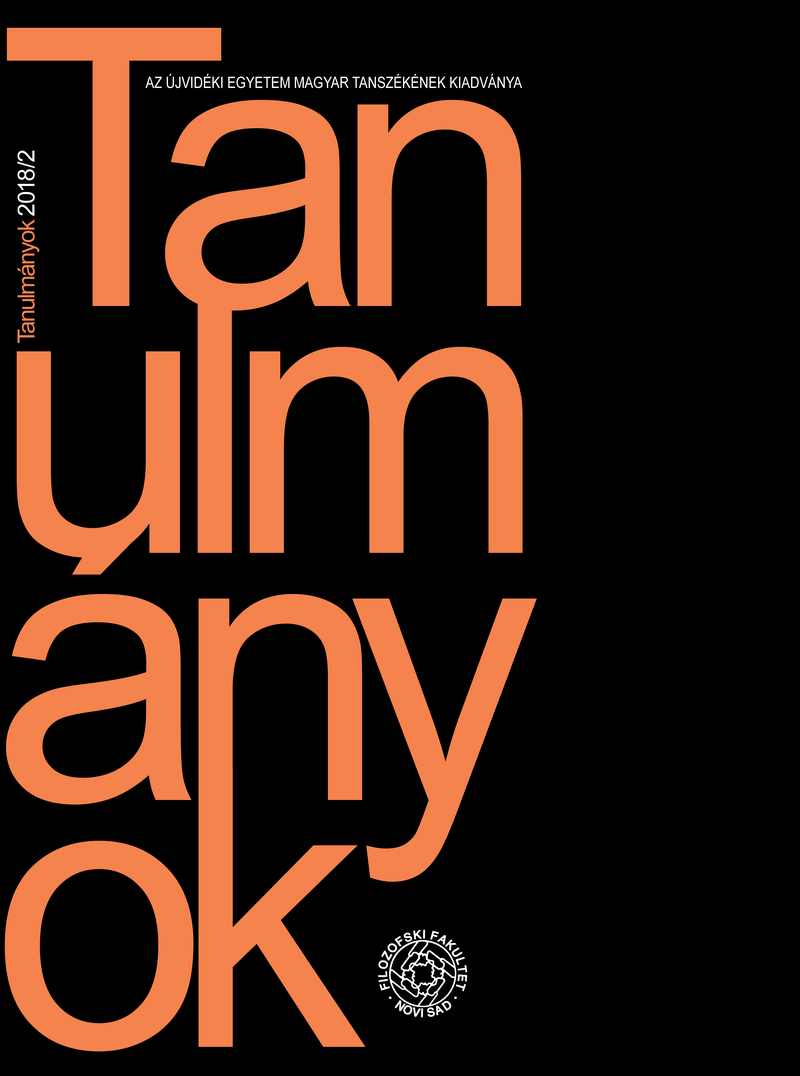FELEDÉSBE MERÜLT KUTYÁK
A magyar kutya vezérszavú frazémák archaikus rétege kognitív nyelvészeti megközelítésben
Absztrakt
A dolgozat a kutya vezérszavú archaikus frazémák kognitív nyelvészeti elemzését tűzte ki célul, hogy fényt derítsen arra, vajon felfedezhetőek-e közös jellemzők ezen frazémák között, és ezzel magyarázatot találjon arra, milyen tényezők vezethetnek a frazémák köznyelvi használatból való kiveszéséhez. Az archaikus frazémák vizsgálata kimutatta, hogy egy frazémának a használatból való kiveszése többek között különböző kognitív jelenségekkel hozható kapcsolatba, melyek közül a kutya prototípusának elváltozása, a falu fogalmi keret redukálódása és egyes fogalmaknak a fogalmi rendszerből való kiveszése voltak azok a tényezők, amelyek hozzájárulhattak ezeknek a köznyelvi használatból való kiveszéséhez.
Hivatkozások
Burger, Harald. 2003. Phraseologie: Eine Einführung am Beispiel des Deutschen. 2. kiadás. Berlin: Erich Schmidt Verlag.
Coleman, Linda–Kay, Paul. 1981. Prototype Semantics: The English Word Lie. In Language 57: 26–44.
De Mello, Margo. 2012. Faces Around the World: A Cultural Enyclopedia of the Human Face. Santa Barbara, Dencer, Oxford: ABC-CLIO.
Dobrovol'skij, Dimitrij‒Piirainen, Elisabeth. 2009. Zur Theorie der Phraseologie: Kognitive und kulturelle Aspekte. Tübingen: Staufenburg Verlag Brigitte Narr GmbH.
Evans, Vyvyan. 2007. A Glossary of Cognitive Linguistics. Edinburgh: Edinburgh University Press.
Fillmore, Charles J. 1977. Scenes-and-frames semantics. In Linguistic Structures Processing, szerk. Zampolli, Antonio. 55–81. Amsterdam–New York: North Holland Publishing Company.
Fillmore, Charles J. 1982. Frame semantics. In Linguistics in the Morning Calm, szerk. The Linguistic Society of Korea, 111–137.
Fleischer, Wolfgang. 1982. Phraseologie der deutschen Gegenwartssprache. Leipzig: VEB Bibliographisches Institut.
Kövecses Zoltán‒Benczes Réka. 2010. Kognitív nyelvészet. Budapest: Akadémiai Kiadó.
Lakoff, George‒Johnson, Mark. 1980. Metaphors We Live By. Chicago and London: The University of Chicago Press.
Lakoff, George–Turner, Mark. 1989. More Than Cool Reason: A Field Guide to Poetic Metaphor. Chicago: The University of Chicago Press.
Lakoff, George. 1993. The contemporary theory of metaphor. In Metaphor and Thought, szerk. Ortony, Andrew. 202–251. Cambridge: Cambridge University Press.
Mervis, Carolyn B.–Rosch, Eleanor. 1981. Categorization of natural objects. In Annual Review of Psychology 32: 89–115.
O. Nagy Gábor. 1999. Mi fán terem? Magyar szólásmondások eredete. 6. kiadás. Budapest: Talentum.
Palm, Christine. 1995. Phraseologie: Eine Einführung. Tübingen: Gunter Narr Verlag.
Riemer, Nick. 2003. When is a metonymy no longer a metonymy? In Metaphor and Metonymy in Comparison and Contrast, szerk. Dirven, René‒Pörings, Ralf. 379‒406. Berlin–New York: Mouton de Gruyter.
Rosch, Eleanor–Mervis, Carolyn B. 1975. Family resemblances: Studies in the internal structure of categories. In Cognitive Psychology 7: 573–605.
Rosch, Eleanor. 1978. Principles of categorization. In Cognition and Categorization, ed. Rosch, Eleanor–Lloyd, Barbara B. 27–48. Hillsdale, NJ: Lawrence Erlbaum.







